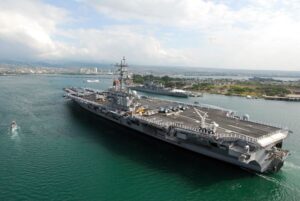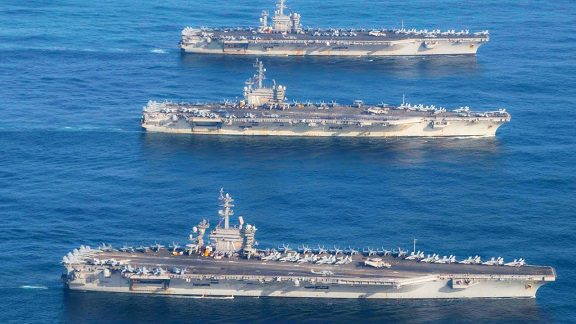US ballistic missile submarine: First in decades, a nuclear-armed US ballistic missile submarine visited South Korea. North Korea recently test-fired a solid-fueled intercontinental ballistic missile. The Ohio-class ballistic missile submarine was spotted in Busan on Tuesday afternoon by the South Korean Defense Ministry.
Kurt Campbell, US National Security Council Indo-Pacific coordinator, attended the Nuclear Consultative Group (NCG) inaugural meeting in Seoul. At their April summit in Washington, US and South Korean leaders created the NCG.
Given regional tensions, the deployment of the US ballistic missile submarine to the Korean Peninsula has garnered attention. North Korea has tested a long-range missile and threatened US military reconnaissance aircraft conducting “hostile espionage” near its territory. Kim Yo Jong, sister of North Korean leader Kim Jong Un and a senior official, worried that the submarine would further strain communication between the two sides.
Ohio-class subs, nicknamed “boomers,” can carry 20 Trident II ballistic missiles. A US ballistic missile submarine could carry 80 nuclear warheads if each Trident missile can carry four.
Presidents Joe Biden and Yoon Suk Yeol agreed to allow the port call during their meeting in Washington earlier this year. The “Washington Declaration” outlined measures to deter Pyongyang from attacking its southern neighbor. President Biden reaffirmed the mutual defense treaty and extended deterrence, including the nuclear deterrent.
The Biden-Yoon meeting led to the NCG. The US and South Korea believed the NCG would strengthen their deterrence and response posture in a joint statement. This collaboration should help maintain peace and stability on the Korean Peninsula and in the Indo-Pacific.


READ MORE: Unveiling Greenwashing Tactics: Fake Profiles Wikipedia Edits & PR Battles at COP28
Some analysts say a US Navy ballistic missile submarine in a South Korean port is mostly a symbolic gesture, but others say it reduces the sub’s stealth. Carl Schuster, former director of operations at the US Pacific Command’s Joint Intelligence Center, noted that this reduces the submarine’s most powerful assetits stealthiness.
The submarines’ Trident missiles can strike North Korea from the Pacific, Indian, or Arctic oceans due to their 4,600-mile (7,400-kilometer) range. Blake Herzinger, a US Studies Centre research fellow, confirmed that these submarines can reach targets without being near the Korean Peninsula. Military strategy and nuclear deterrence uncertainty are raised.
Nuclear deterrence relies on ambiguity. A US ballistic missile submarine hundreds of feet deep and thousands of miles from North Korea could strike Pyongyang while undetected. When a submarine arrives in South Korea for a scheduled port visit, which requires 24 to 48 hours’ notice, it becomes much more visible, giving North Korea an advantage by revealing its location and itinerary.
The historic port call of a nuclear-armed US submarine in South Korea highlights the changing regional dynamics. This shows the US-South Korea alliance amid rising tensions. The military significance is debatable, but the symbolism and strategic messaging emphasize extended deterrence and peace and stability in the Korean Peninsula and Indo-Pacific region.
Our Reader’s Queries
How many ballistic missile submarines does the US have?
The U.S. operates 18 Ohio-class submarines, with 14 specifically designed for carrying Trident II ballistic missiles. Each of these submarines can hold up to 24 of these powerful missiles. However, as part of the START II treaty, 4 of the missile launch tubes on each submarine have been deactivated.
What is the difference between a cruise missile submarine and a ballistic missile submarine?
Most cruise missile submarines can still launch nuclear warheads on their missiles. However, they are different from ballistic missile submarines because of the significant differences in how the two weapons systems fly. Unlike ballistic missiles, cruise missiles use aerodynamic flight surfaces like wings to fly.
Which country has the most ballistic missile submarines?
The United States and Russia are the main players in the deployment of ballistic missile submarines, with France, the United Kingdom, China, and India also having smaller numbers in service. There are suspicions that North Korea has an experimental diesel-electric powered submarine as well. After the collapse of the Soviet Union, the dominance in this area shifted to the United States and Russia.
What is the deadliest submarine in the world?
The Seawolf Class is the United States’ most potent attack submarine. Boasting eight torpedo tubes and the capability to take on numerous targets at once, it is unrivaled beneath the waves. Despite its remarkable abilities, the steep price tag resulted in only three of these submarines being constructed.

